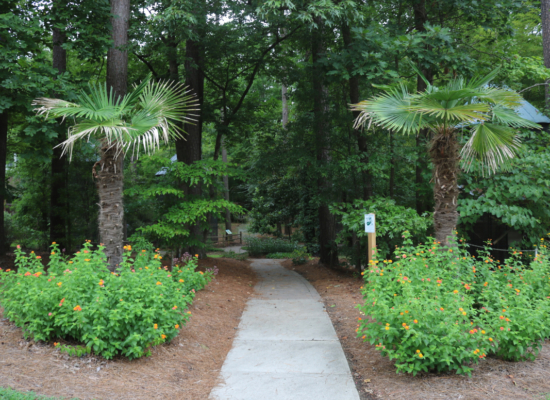Overview
The Duke Lemur Center is located on 100 acres in Duke Forest approximately two miles from Duke University’s main West Campus, the academic and residential heart of Duke.
Because all of our research is non-invasive, the DLC is open to the public! More than 32,000 people visit every year to learn about lemurs, science, and conservation. Please note, though, that all visitors need to make a reservation to see our lemurs. We offer both general and premium tours catering to all ages, budgets, and levels of interest in addition to a robust research program for students and scientists at Duke and around the world. If you’re a researcher interested in learning more about our lemurs, please visit our “For Researchers” homepage.
Housing
The DLC’s lemurs live in large, multi-acre tracts of natural forest as well as climate-controlled buildings with indoor and outdoor access. Housing varies by species, the weather, and the specific animals and family groups in question. To learn more about lemur housing as well as our public tour path, please read on. Thanks so much for your interest!
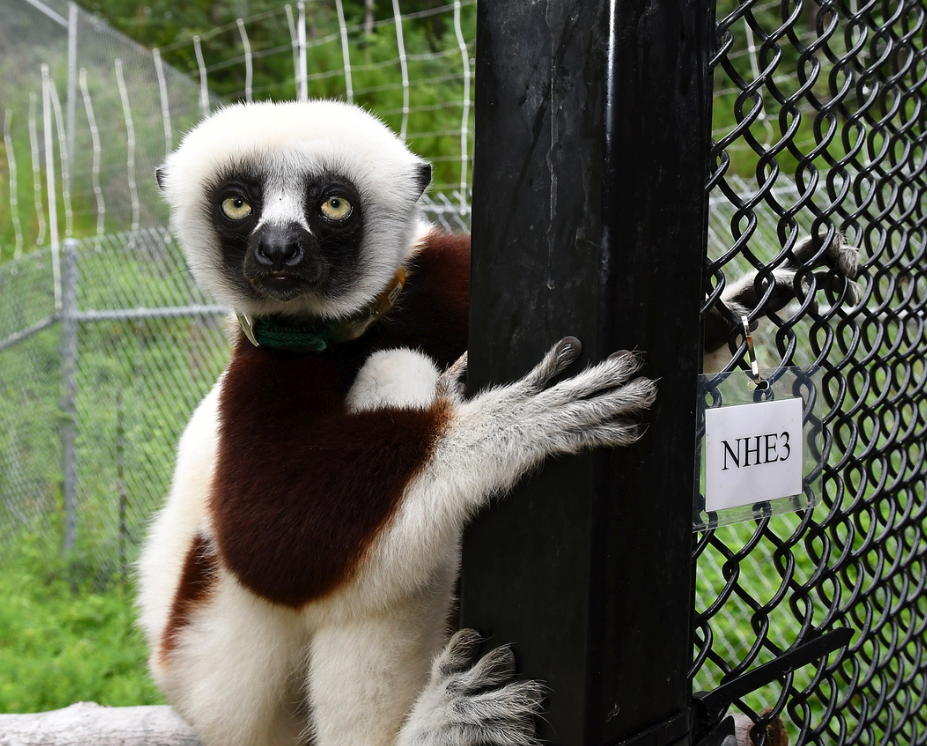
The DLC has two types of enclosures: Natural Habitat Enclosures (NHEs) and Indoor Enclosures with Outdoor Yards.
Our indoor/outdoor housing areas (Miaro building, Aty Ala building, and the Triplex) are specially constructed for the physical and mental health of our lemurs. Each family group of lemurs is housed within a large set of interconnected enclosures and has multiple indoor rooms available to them (heated and cooled, depending on season), which are connected to multiple outdoor yards. For example, a family of 4 lemurs has access to at least 4 ‘sets’ of indoor/outdoor areas, totaling 8 individual enclosures. Different doorways lead into and out of these areas, creating ample space for natural movement and play and giving the animals privacy — away from each other, or away from public view — whenever they desire it.
The configuration of these indoor/outdoor spaces also helps facilitate lemur research (all non-invasive) and care by allowing us to temporarily close off individual rooms within each family’s set of enclosures. This flexibility is brilliant for managing breeding groups and especially new moms and infants, as infant survival rates are significantly higher when mother and baby are separated from the group for a few days and gradually reintroduced when the infant is less vulnerable. Wire fencing between enclosures allows these lemurs to be separate and safe, while also maintaining visual and olfactory contact with the rest of their family.
Guests on our general tours tours see only the outside areas of these enclosures, whereas guests on our premium tours tours see the lemurs’ outdoor and indoor areas.
To keep our lemurs physically and mentally engaged, the indoor/outdoor enclosures are re-branched and re-furnished often to give them new layouts to explore, and special and varied enrichment activities are provided daily. These help promote natural behavior like foraging and promote not just physical health but also mental stimulation and all other aspects of the well-being of the lemurs under our care. Learn more about the DLC’s enrichment and training program on our Behind the Scenes tours.
During the warm months of the year (typically mid-April to mid-October), a large number of our lemurs get to free-range in large forested Natural Habitat Enclosures while also retaining access to their indoor/outdoor enclosures. Most enclosures contain multiple species and are ideal for observational studies that focus on more naturalistic behaviors. Guests can see lemurs in their NHEs on the Walking with Lemurs tour.
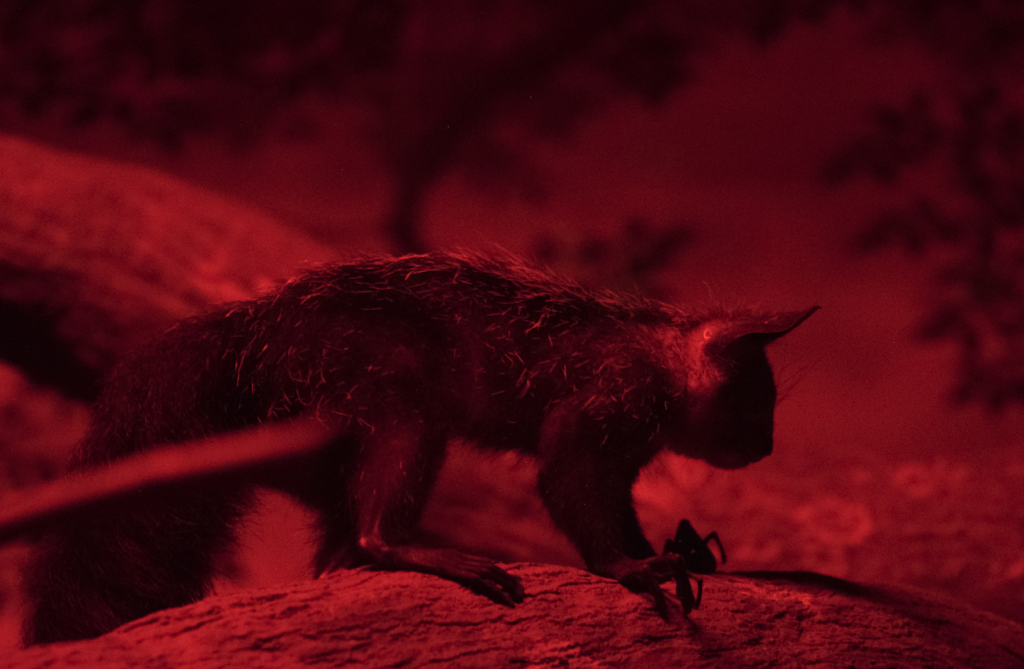
Our nocturnal lemurs and lorises are housed indoors in the Nocturnal Building and the DLC’s main administrative building, and may be set up in either single-species enclosures or mixed-species free ranging rooms. All are on a reverse light cycle so that they are active (with lights out) during the day while DLC staff members are able to feed and enrich them and researchers are able to observe them.
Pictured: An aye-aye viewed during her wake cycle under nocturnal lighting (dim red lights).
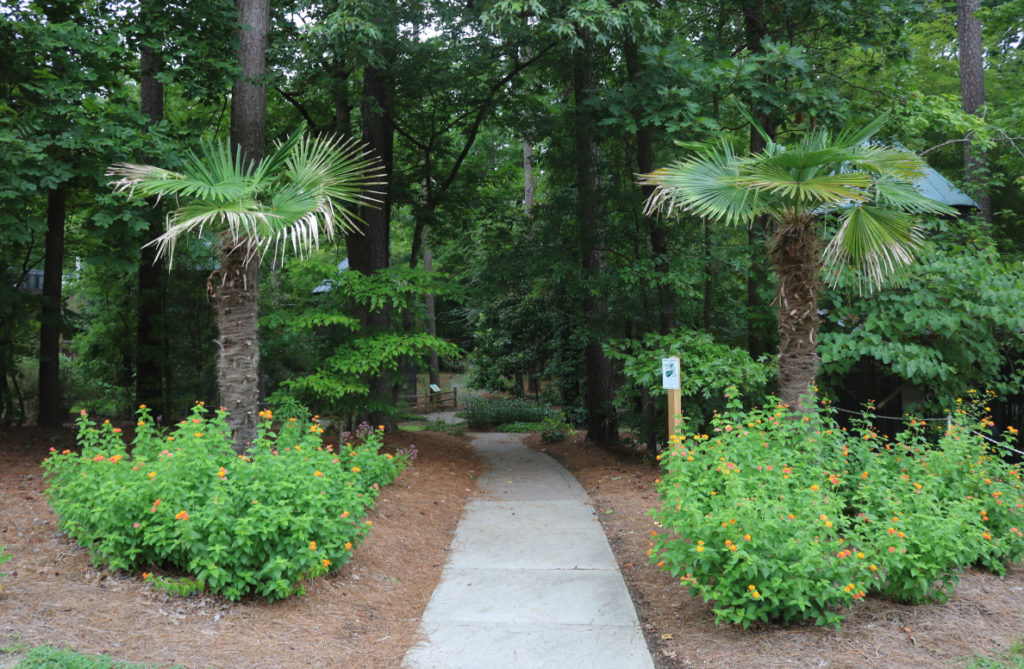
The Duke Lemur Center’s tour path is now a certified Monarch Waystation! The monarch butterfly is threatened by habitat loss across North America. As milkweeds and other nectar sources become scarce, monarchs have struggled to find suitable habitat with the plants they need for food and shelter during their long annual migration to Mexico. Our waystation provides the plants that monarchs need for food and to lay their eggs, serving as a rest and refueling stop on their long journey west, and is highly beneficial for other pollinators, too!
In addition, the DLC’s Monarch Waystation is a valuable teaching tool that illustrates how conservation starts literally in our own backyards. Our local ecosystems, habitats, and animals/insects should be protected and supported, in the same way that lemurs and their habitat in Madagascar should be.
To learn more about the importance of Monarch Waystations and how to create your own, please visit MonarchWatch.org. To download a list of plants used in the Duke Lemur Center’s summer garden and tour path, click HERE. On the list, plants are identified as native and/or attractive to butterflies.
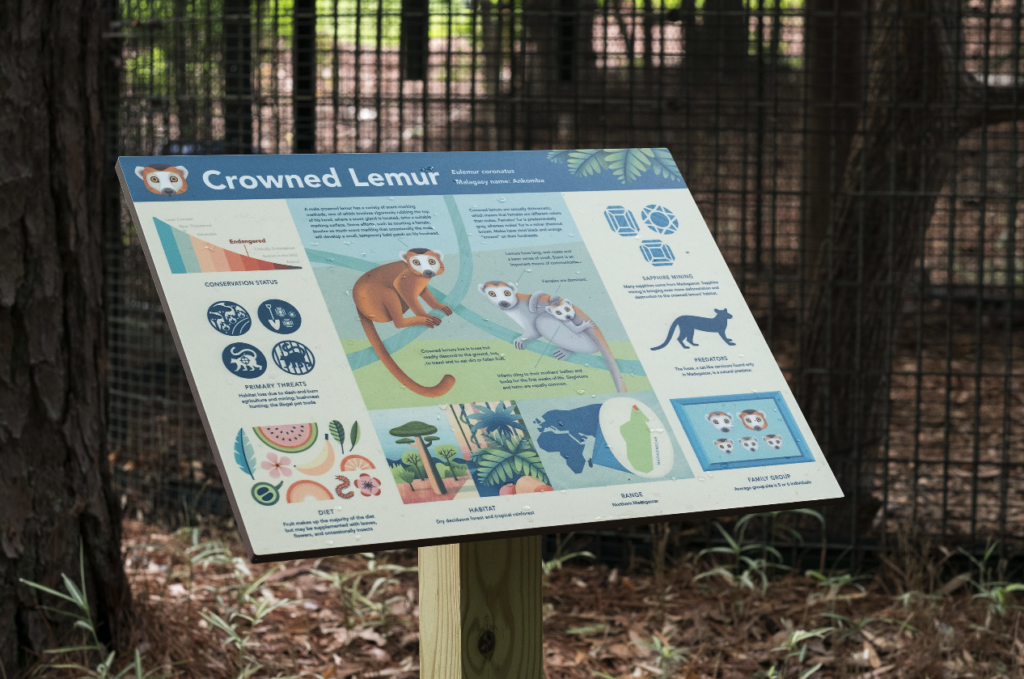
The DLC's public tour path is enhanced by a series of beautiful and informative infographics created for the Lemur Center by Caitlin Hansen Design, Lettering, and Illustration.
High-resolution images of the complete set of seven illustrations—ring-tailed lemur, Coquerel's sifaka, crowned lemur, mongoose lemur, black and white ruffed lemur, red ruffed lemur, and blue-eyed black lemur—can be viewed in Caitlin's design portfolio.

